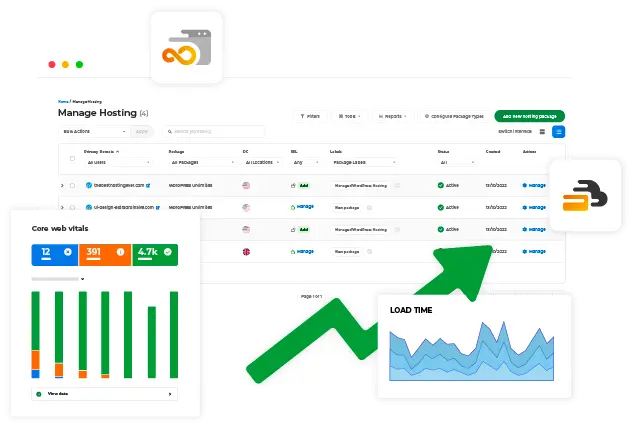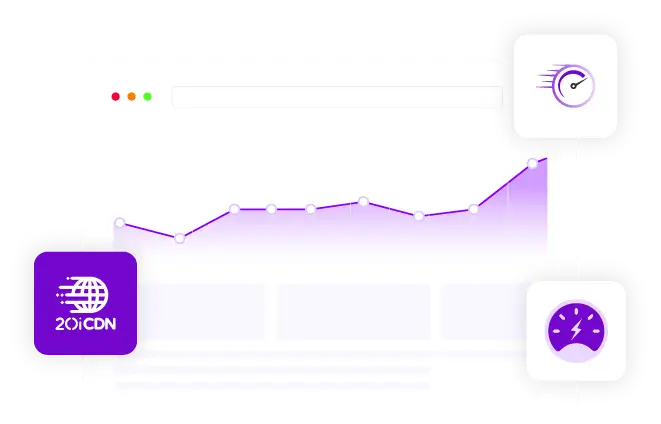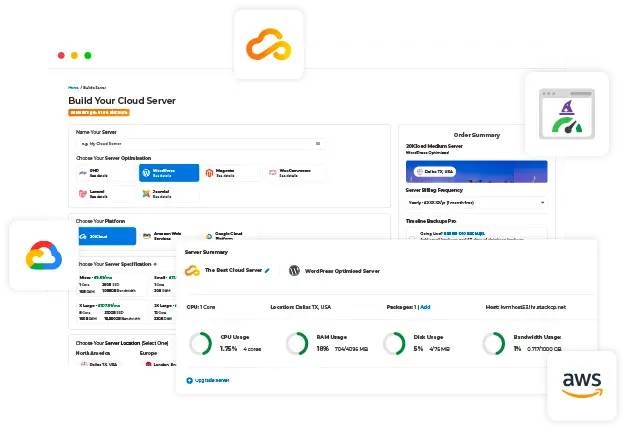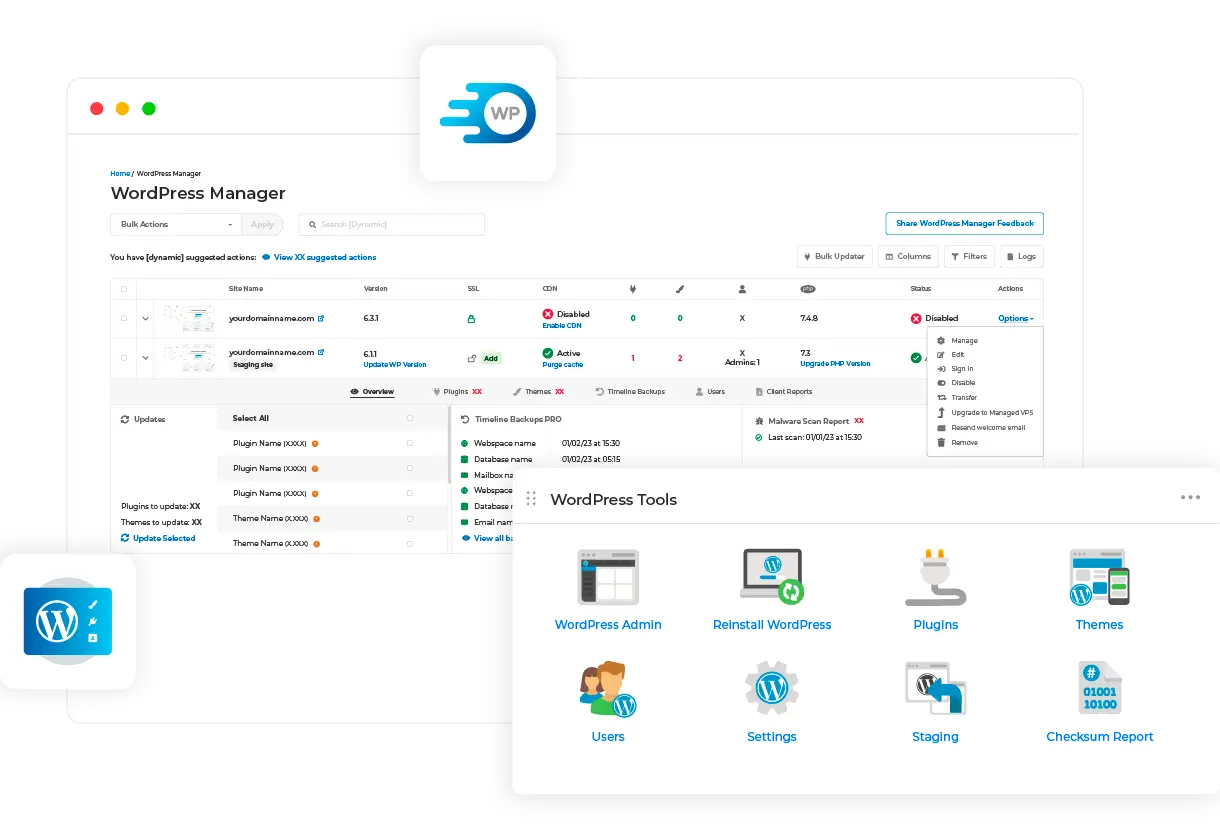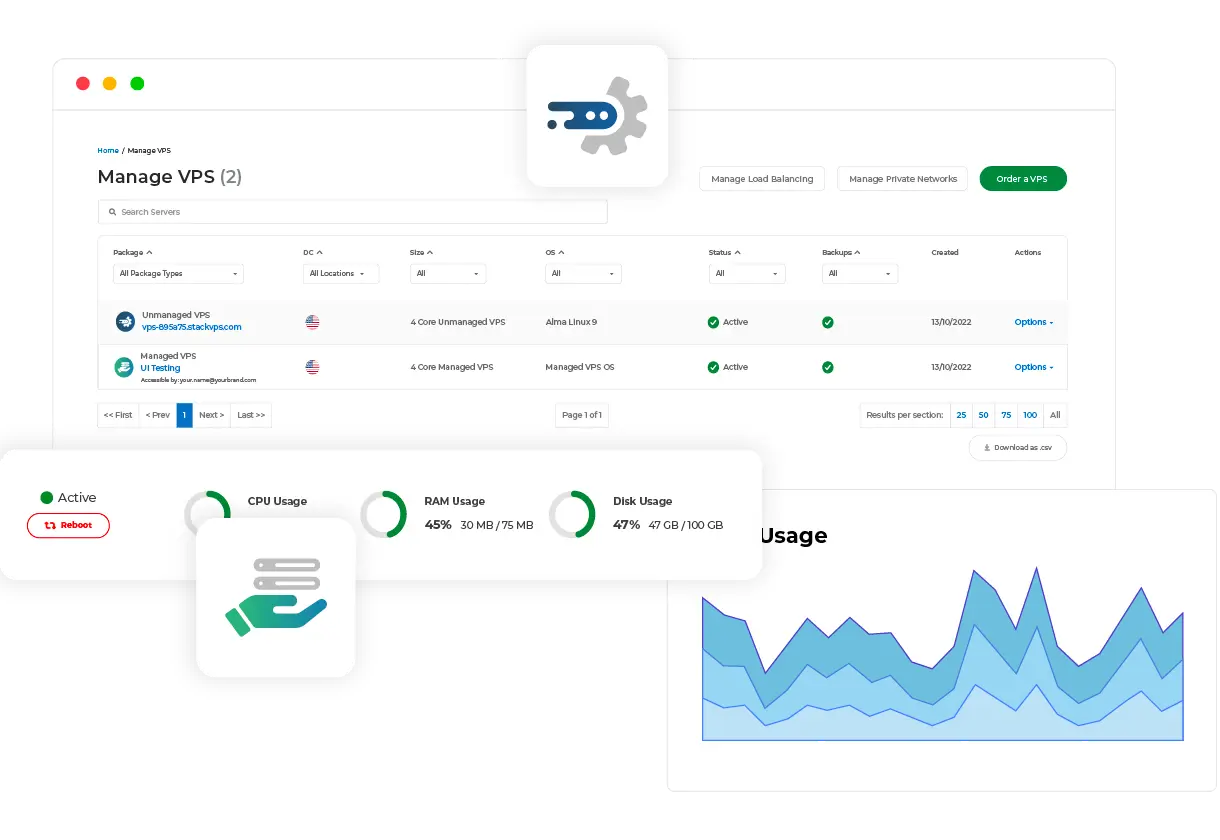
Website Application Firewall
Instant protection with free WAF
- Automatically block suspicious traffic
- Fully integrated - no plugins required
- 100% free for all 20i customers

How 20i protects your website from malicious attacks & data breaches
Our custom built, enterprise-level Web Application Firewall (WAF) is included at no extra cost. 20i WAF protects all your sites against a variety of threats, including cross site scripting (XSS), MySQL injections, suspicious traffic & more.
Multi-layered security
Our free firewall is powered by two layers of defense. We scan every request at the edge before it reaches your site, and any threats are blocked instantly. Next, our server-level firewall provides additional protection against brute force attacks, exploits, and more.
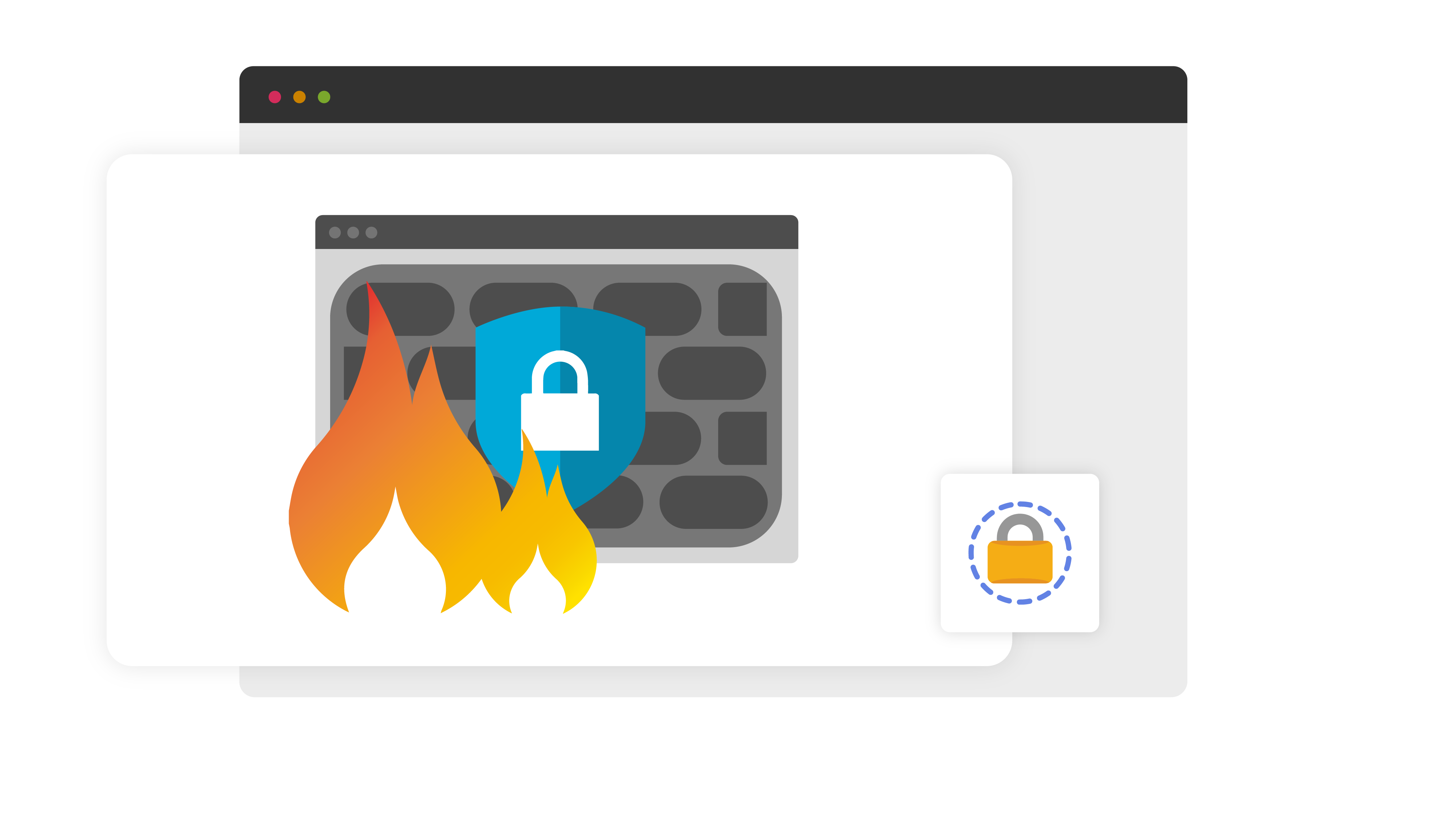
Pre-configured for maximum protection
Our WAF comes preconfigured with highly optimized firewall rules to detect the latest threats. Rules protect against OWASP top 10 attacks like XSS, SQLi, and more.
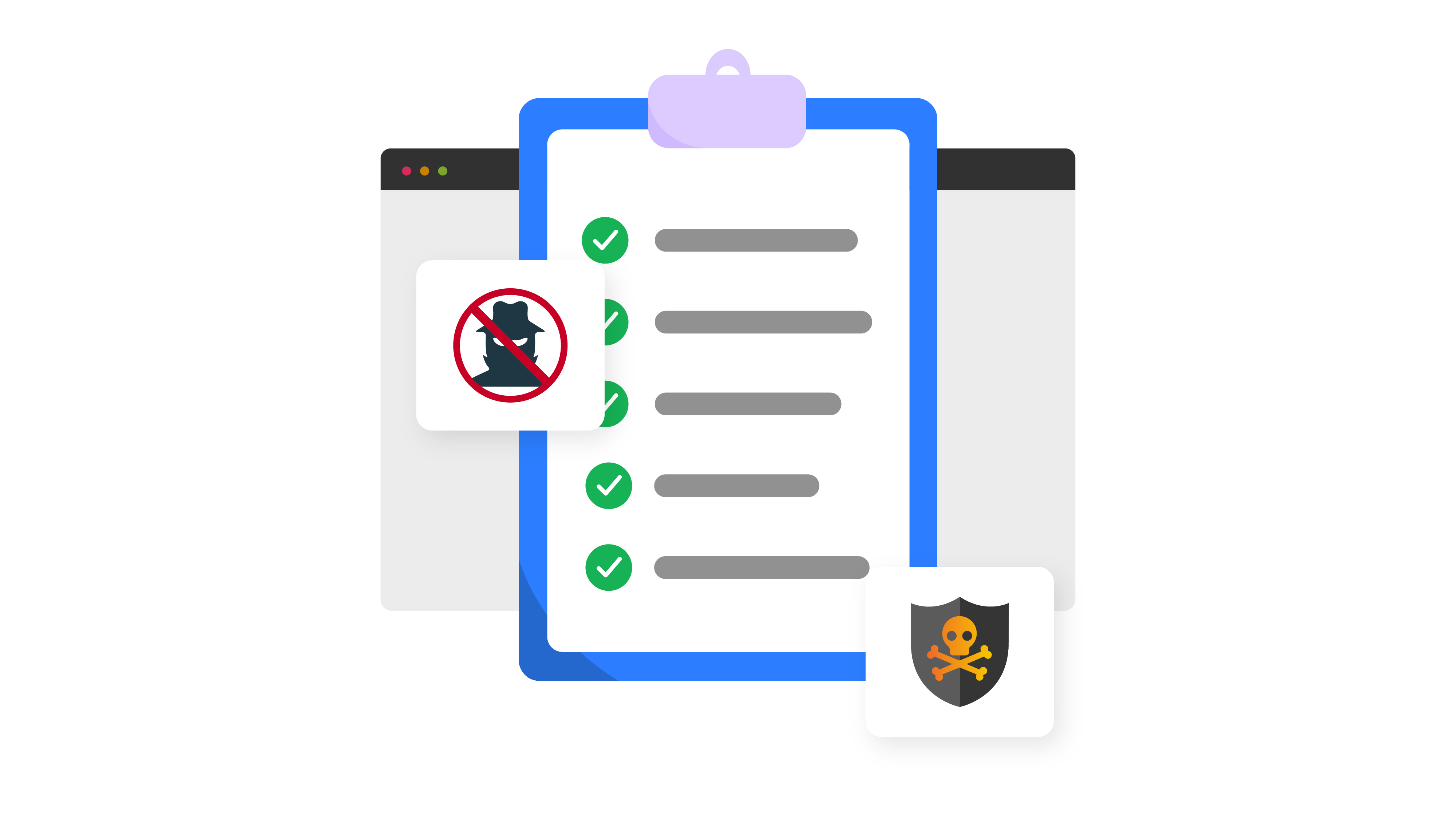
Optimised for speed
Our WAF runs at the very edge of our network, intercepting requests before your website code. Not running as an extension or plugin to your site means your sites load faster, and without any code changes your sites will get instant protection effortlessly.

Expert bot detection
20i WAF intercepts malicious bots ensuring only legitimate interactions get through and harmful ones are blocked, safeguarding your sites from unauthorized crawling, content theft and spam submissions.

Enjoy peace of mind with our enterprise level security
Our free WAF is your first line of defence against cybercriminals hacking your site's critical data and information.
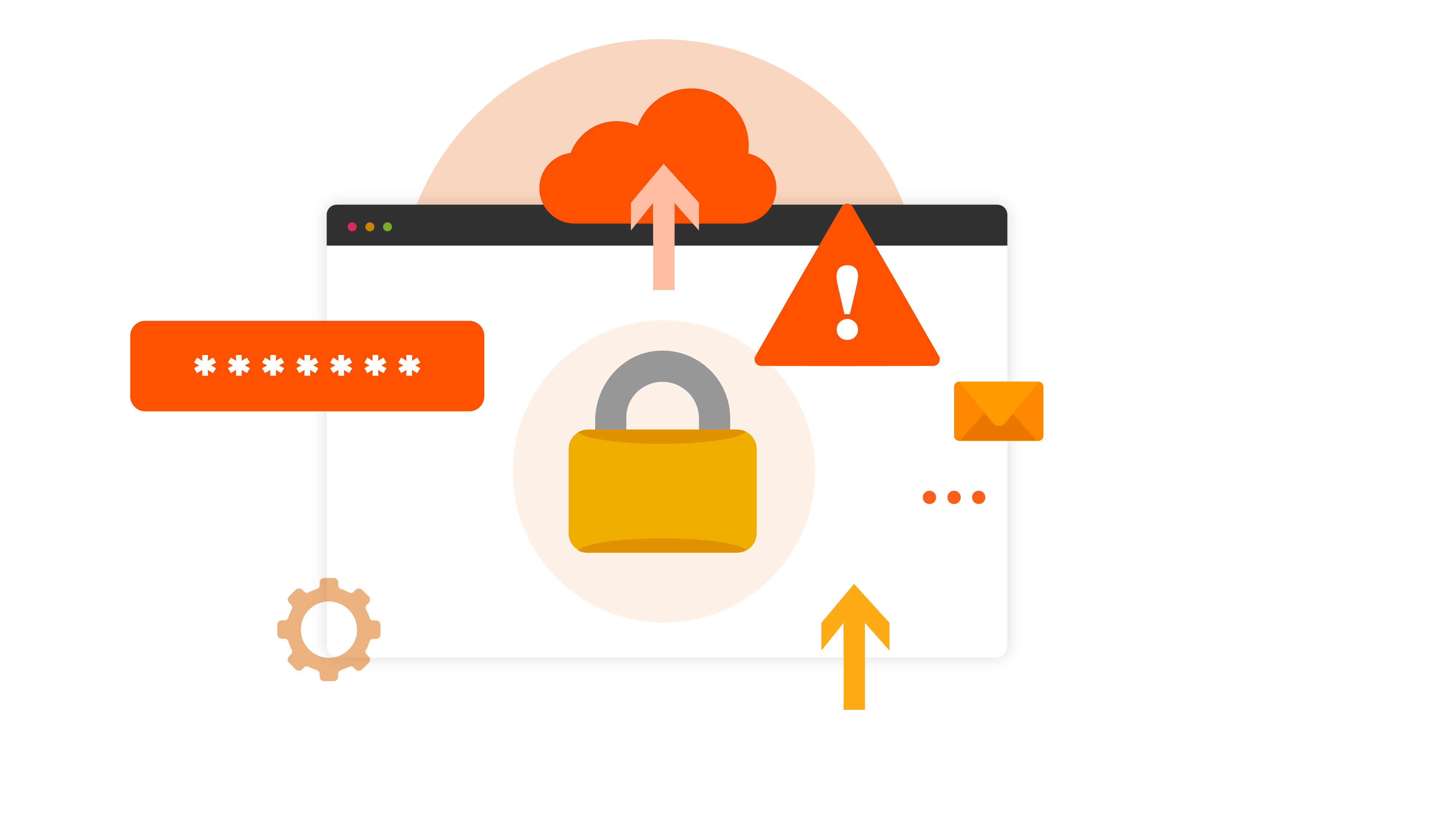
Compliance
requirements
Having a WAF shows you take security seriously and can help meet compliance requirements like PCI. It also provides extra assurance to clients that their data is protected.
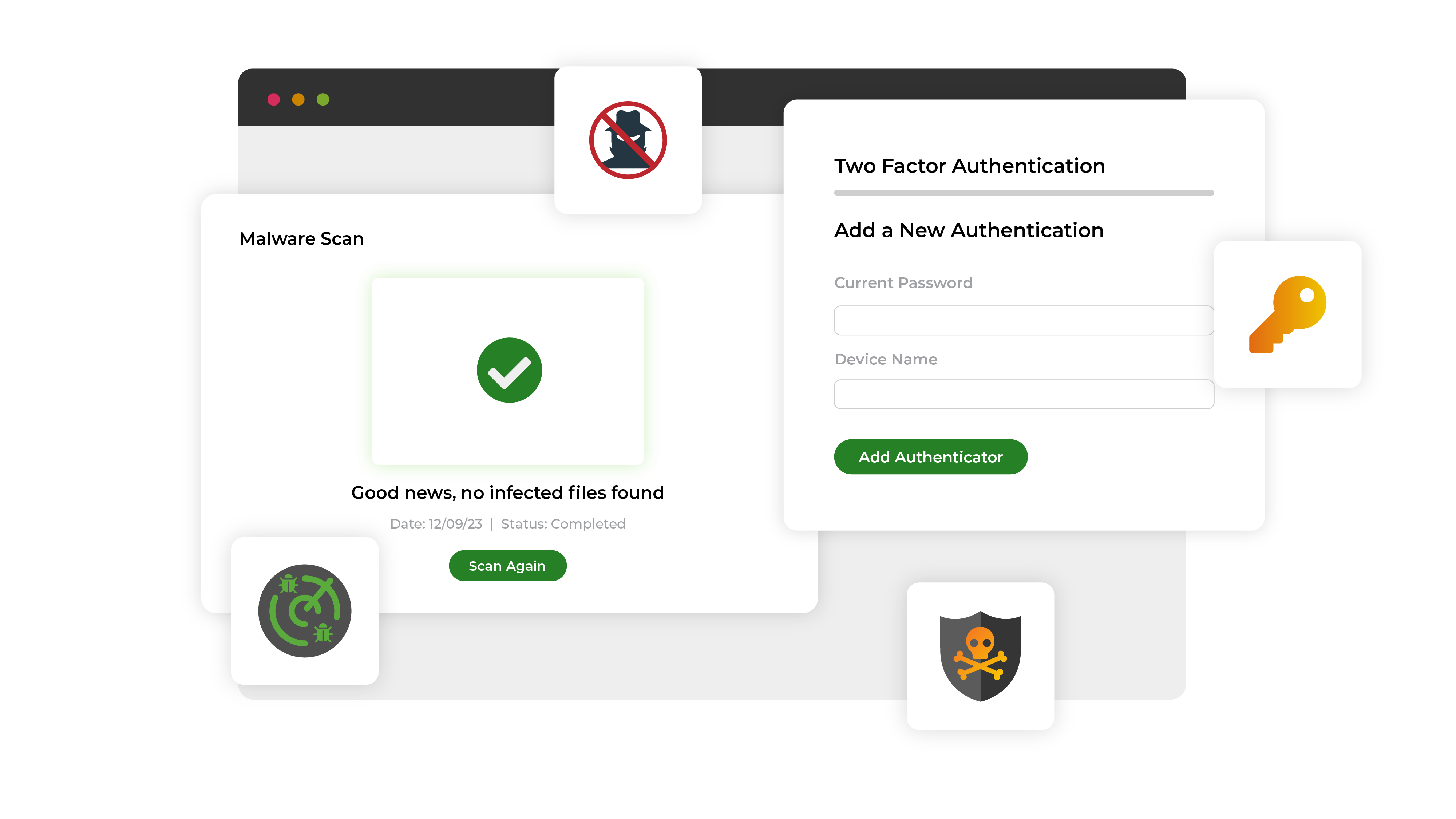
Layered
security
While powerful on its own, our WAF works alongside other security solutions - DDoS protection, Brute-force login protection, malware scanning and 2FA. The more layers, the better!
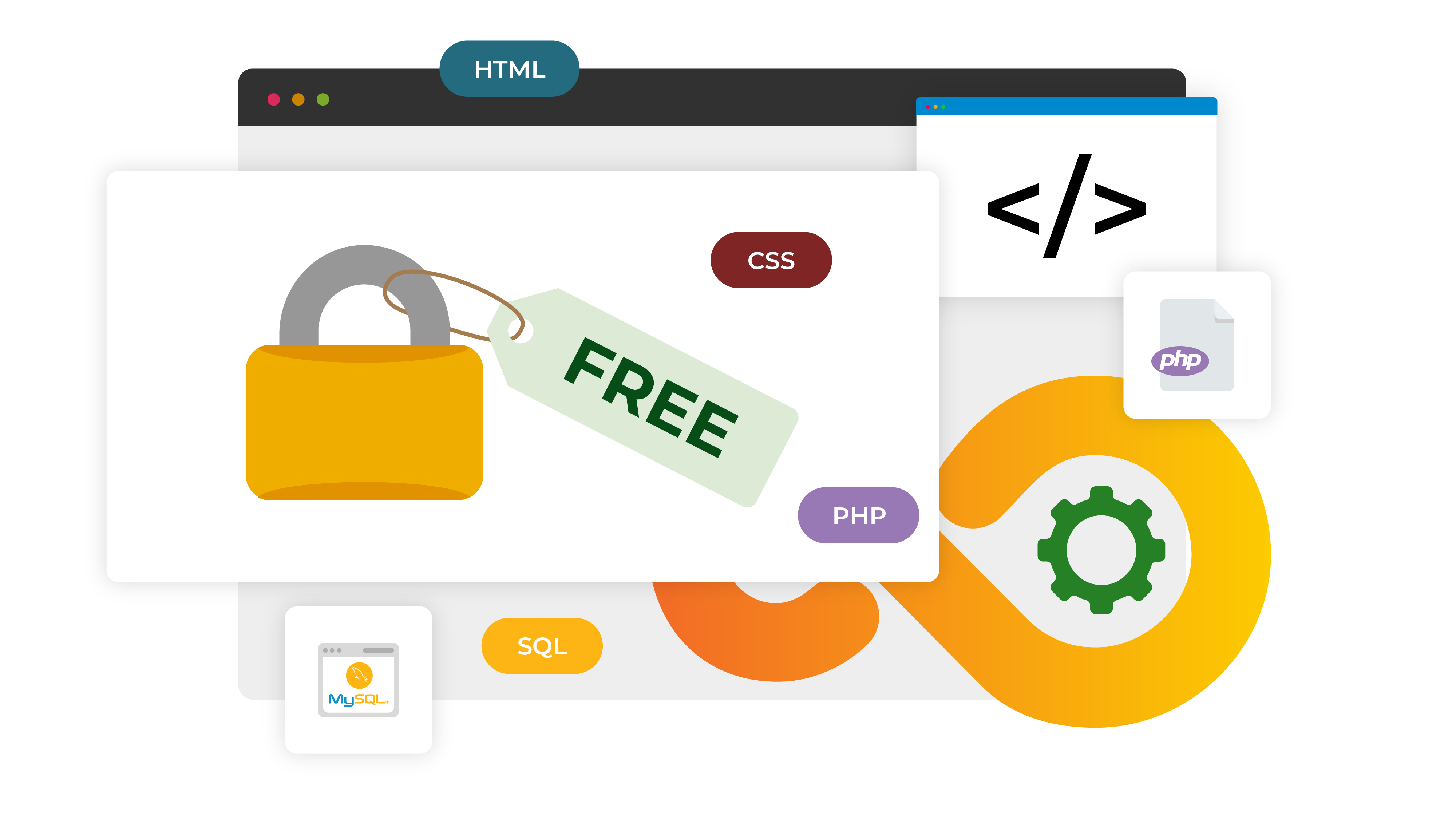
Free &
integrated
Unlike other web hosts who charge extra to secure your website, our WAF comes free with all our hosting and works straight out of the box.
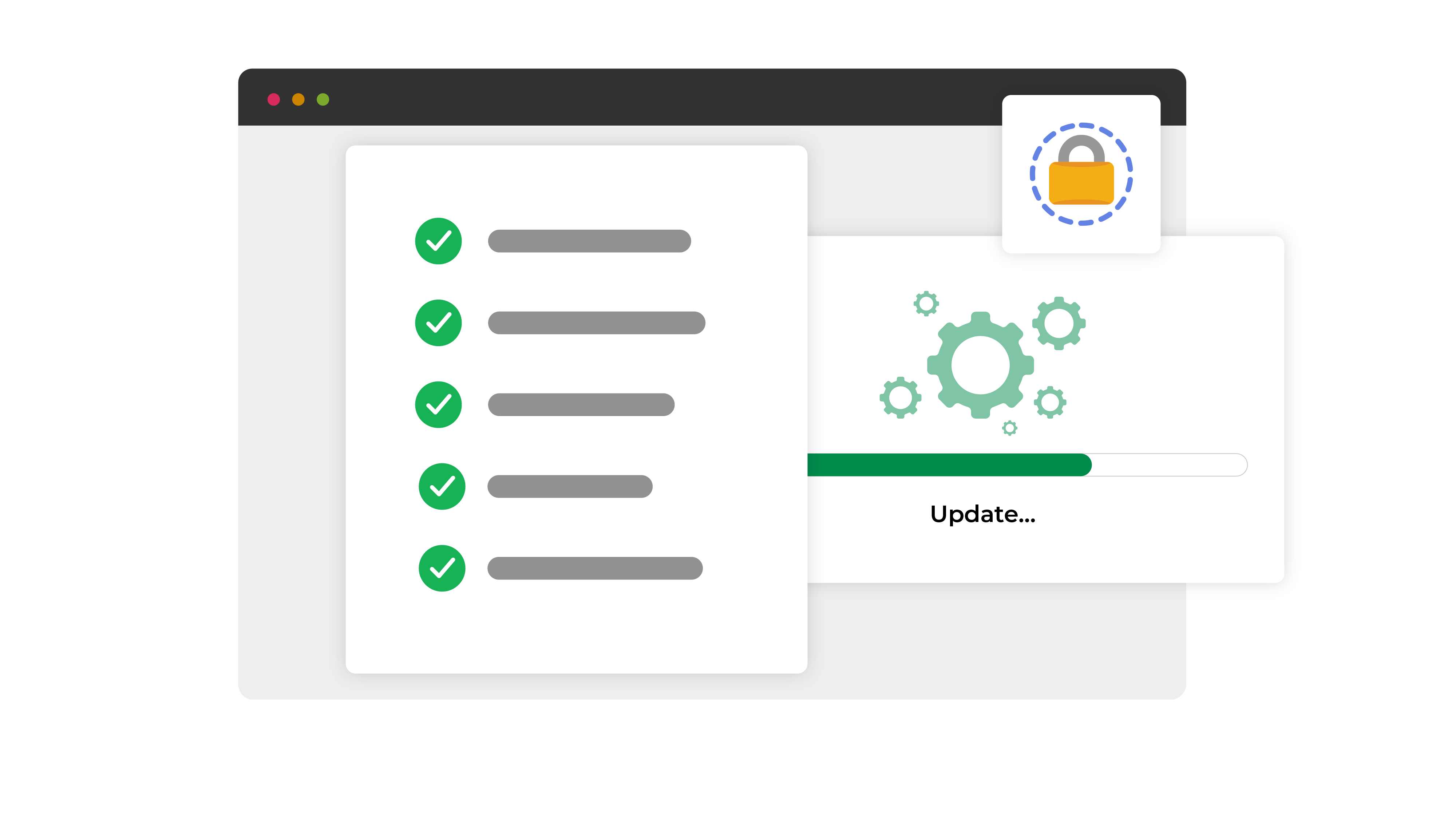
Regular
updates
The 20i security team regularly update the set of rules that filter-out malicious requests. This ruleset is made from commercially available resources and custom rules.
Choose your hosting plan
Enjoy the benefits of using git with any of these hosting packages...

Managed
Cloud Hosting
Flexible, multi-platform Cloud Hosting. Easy server/site deployment & management.

Managed
WordPress Hosting
Host unlimited sites on the #1 WordPress platform
Reseller
Hosting
Sell web hosting to your clients – no ‘per account’ fees.
Award-winning service

20i is perfect!
I’ve been looking for a company like 20i for years. Mary Poppins may be practically perfect, but so far 20i is perfect! At last, a company (bar my own) that meets my high expectations.
Mat Macelely-young
Gold Standard for Customer Service
Never, ever had an issue with the 20i customer service team; they're prompt, efficient, and very professional. I'd even say thinking about it, they're the gold standard for customer service.
Emlyn Mousley
Service is top notch
I have been with 20i for a few years now. The service is top notch, their dashboard is absolutely amazing and what is most important is that their support is second to none.
Ante Drnasin
Best hosting company ever
I’ve been building websites for 26 years. This company is hands down the best host I’ve ever used. The support is phenomenal, the control panel is a delight to use, and the features are so comprehensive.
Adam

An unparalleled service, experience and support!
Their support is amazing and it's like having an extension to our own team. Hands down the most caring and best hosting support team.
Ashley B
Best hosting company of all time!
Roughly once a year I feel I need to write a review for 20i as they are just so brilliant! I've got nearly 600 websites hosted with them. You need to have a lot of trust in a hosting company to do that.
Darren Strudwick
Incredible service!
I have been a customer of 20i for many years, and you couldn't pay me to leave them. Having used many of the other well-known hosting companies in the past, I can tell you hand-on-heart, they are embarrassing compared to the extremely high standards that 20i adheres to.
Verified User in Computer & Network Security

I honestly couldn't recommend 20i enough
The support team at 20i is the best support team I've dealt with. They've ALWAYS gone the extra mile.
Callum D

Excellent Reseller Hosting Experience
The platform is incredibly user-friendly, making it easy to manage multiple hosting accounts. With 20i's intuitive control panel, I can easily create, modify, and monitor my clients' websites, domains, and email accounts.
Verified User in Computer & Network Security

20i is perfect!
I’ve been looking for a company like 20i for years. Mary Poppins may be practically perfect, but so far 20i is perfect! At last, a company (bar my own) that meets my high expectations.
Mat Macelely-young
Gold Standard for Customer Service
Never, ever had an issue with the 20i customer service team; they're prompt, efficient, and very professional. I'd even say thinking about it, they're the gold standard for customer service.
Emlyn Mousley
Service is top notch
I have been with 20i for a few years now. The service is top notch, their dashboard is absolutely amazing and what is most important is that their support is second to none.
Ante Drnasin
Best hosting company ever
I’ve been building websites for 26 years. This company is hands down the best host I’ve ever used. The support is phenomenal, the control panel is a delight to use, and the features are so comprehensive.
Adam

An unparalleled service, experience and support!
Their support is amazing and it's like having an extension to our own team. Hands down the most caring and best hosting support team.
Ashley B
Best hosting company of all time!
Roughly once a year I feel I need to write a review for 20i as they are just so brilliant! I've got nearly 600 websites hosted with them. You need to have a lot of trust in a hosting company to do that.
Darren Strudwick
Incredible service!
I have been a customer of 20i for many years, and you couldn't pay me to leave them. Having used many of the other well-known hosting companies in the past, I can tell you hand-on-heart, they are embarrassing compared to the extremely high standards that 20i adheres to.
Verified User in Computer & Network Security

I honestly couldn't recommend 20i enough
The support team at 20i is the best support team I've dealt with. They've ALWAYS gone the extra mile.
Callum D

Excellent Reseller Hosting Experience
The platform is incredibly user-friendly, making it easy to manage multiple hosting accounts. With 20i's intuitive control panel, I can easily create, modify, and monitor my clients' websites, domains, and email accounts.
Verified User in Computer & Network Security

20i is perfect!
I’ve been looking for a company like 20i for years. Mary Poppins may be practically perfect, but so far 20i is perfect! At last, a company (bar my own) that meets my high expectations.
Mat Macelely-young
Gold Standard for Customer Service
Never, ever had an issue with the 20i customer service team; they're prompt, efficient, and very professional. I'd even say thinking about it, they're the gold standard for customer service.
Emlyn Mousley
Service is top notch
I have been with 20i for a few years now. The service is top notch, their dashboard is absolutely amazing and what is most important is that their support is second to none.
Ante Drnasin
Best hosting company ever
I’ve been building websites for 26 years. This company is hands down the best host I’ve ever used. The support is phenomenal, the control panel is a delight to use, and the features are so comprehensive.
Adam

An unparalleled service, experience and support!
Their support is amazing and it's like having an extension to our own team. Hands down the most caring and best hosting support team.
Ashley B
Best hosting company of all time!
Roughly once a year I feel I need to write a review for 20i as they are just so brilliant! I've got nearly 600 websites hosted with them. You need to have a lot of trust in a hosting company to do that.
Darren Strudwick
Incredible service!
I have been a customer of 20i for many years, and you couldn't pay me to leave them. Having used many of the other well-known hosting companies in the past, I can tell you hand-on-heart, they are embarrassing compared to the extremely high standards that 20i adheres to.
Verified User in Computer & Network Security

I honestly couldn't recommend 20i enough
The support team at 20i is the best support team I've dealt with. They've ALWAYS gone the extra mile.
Callum D

Excellent Reseller Hosting Experience
The platform is incredibly user-friendly, making it easy to manage multiple hosting accounts. With 20i's intuitive control panel, I can easily create, modify, and monitor my clients' websites, domains, and email accounts.
Verified User in Computer & Network Security

20i is perfect!
I’ve been looking for a company like 20i for years. Mary Poppins may be practically perfect, but so far 20i is perfect! At last, a company (bar my own) that meets my high expectations.
Mat Macelely-young
Gold Standard for Customer Service
Never, ever had an issue with the 20i customer service team; they're prompt, efficient, and very professional. I'd even say thinking about it, they're the gold standard for customer service.
Emlyn Mousley
Service is top notch
I have been with 20i for a few years now. The service is top notch, their dashboard is absolutely amazing and what is most important is that their support is second to none.
Ante Drnasin
Best hosting company ever
I’ve been building websites for 26 years. This company is hands down the best host I’ve ever used. The support is phenomenal, the control panel is a delight to use, and the features are so comprehensive.
Adam

An unparalleled service, experience and support!
Their support is amazing and it's like having an extension to our own team. Hands down the most caring and best hosting support team.
Ashley B
Best hosting company of all time!
Roughly once a year I feel I need to write a review for 20i as they are just so brilliant! I've got nearly 600 websites hosted with them. You need to have a lot of trust in a hosting company to do that.
Darren Strudwick
Incredible service!
I have been a customer of 20i for many years, and you couldn't pay me to leave them. Having used many of the other well-known hosting companies in the past, I can tell you hand-on-heart, they are embarrassing compared to the extremely high standards that 20i adheres to.
Verified User in Computer & Network Security

I honestly couldn't recommend 20i enough
The support team at 20i is the best support team I've dealt with. They've ALWAYS gone the extra mile.
Callum D

Excellent Reseller Hosting Experience
The platform is incredibly user-friendly, making it easy to manage multiple hosting accounts. With 20i's intuitive control panel, I can easily create, modify, and monitor my clients' websites, domains, and email accounts.
Verified User in Computer & Network Security

20i is perfect!
I’ve been looking for a company like 20i for years. Mary Poppins may be practically perfect, but so far 20i is perfect! At last, a company (bar my own) that meets my high expectations.
Mat Macelely-young
Gold Standard for Customer Service
Never, ever had an issue with the 20i customer service team; they're prompt, efficient, and very professional. I'd even say thinking about it, they're the gold standard for customer service.
Emlyn Mousley
Service is top notch
I have been with 20i for a few years now. The service is top notch, their dashboard is absolutely amazing and what is most important is that their support is second to none.
Ante Drnasin
Best hosting company ever
I’ve been building websites for 26 years. This company is hands down the best host I’ve ever used. The support is phenomenal, the control panel is a delight to use, and the features are so comprehensive.
Adam

An unparalleled service, experience and support!
Their support is amazing and it's like having an extension to our own team. Hands down the most caring and best hosting support team.
Ashley B
Best hosting company of all time!
Roughly once a year I feel I need to write a review for 20i as they are just so brilliant! I've got nearly 600 websites hosted with them. You need to have a lot of trust in a hosting company to do that.
Darren Strudwick
Incredible service!
I have been a customer of 20i for many years, and you couldn't pay me to leave them. Having used many of the other well-known hosting companies in the past, I can tell you hand-on-heart, they are embarrassing compared to the extremely high standards that 20i adheres to.
Verified User in Computer & Network Security

I honestly couldn't recommend 20i enough
The support team at 20i is the best support team I've dealt with. They've ALWAYS gone the extra mile.
Callum D

Excellent Reseller Hosting Experience
The platform is incredibly user-friendly, making it easy to manage multiple hosting accounts. With 20i's intuitive control panel, I can easily create, modify, and monitor my clients' websites, domains, and email accounts.
Verified User in Computer & Network Security
WAF frequently asked questions
What is a Web Application Firewall?
Web application firewall, or WAF for short, is used to protect your web applications from attacks that try to exploit vulnerabilities. The 20i WAF does this by inspecting every HTTP request for SQL injection, trojans, cross-site scripting, path traversal and many other types of attack, and rapidly responding based on the pre-defined & custom rules that the 20i security team has set.
In simple terms, the firewall is like a security guard, ensuring that the right traffic is allowed into the website and anything malicious is turned away.
How do I use the 20i WAF
You don’t have to do anything. If you host your websites with 20i then you will automatically benefit from the web application firewall, alongside all our other enterprise level security features.
Other hosts charge for WAF, why does 20i include it free?
All our hosting platforms are built with a security first approach, and we provide our customers with all the tools they need to stay safe.
I'm a Reseller, can my customers use the WAF?
Yes! All 20i resellers benefit from our full security suite, so any websites that you add to your hosting packages will also be fully protected.
My website is new, do I need a Firewall?
Bots are constantly scanning the internet looking for new domain names to find websites that haven’t set up any security features yet.
